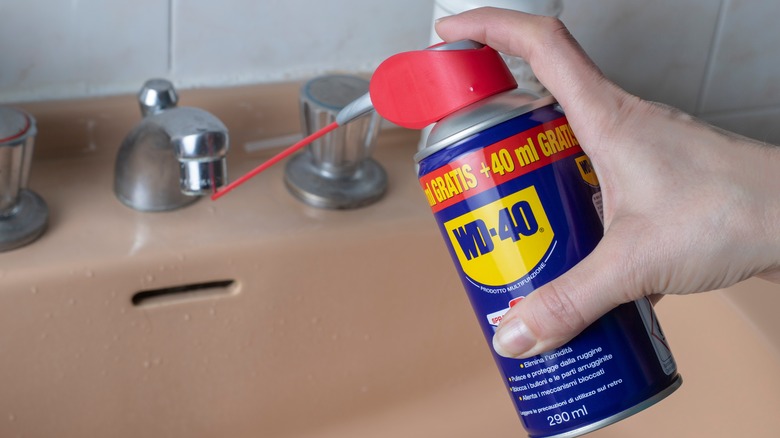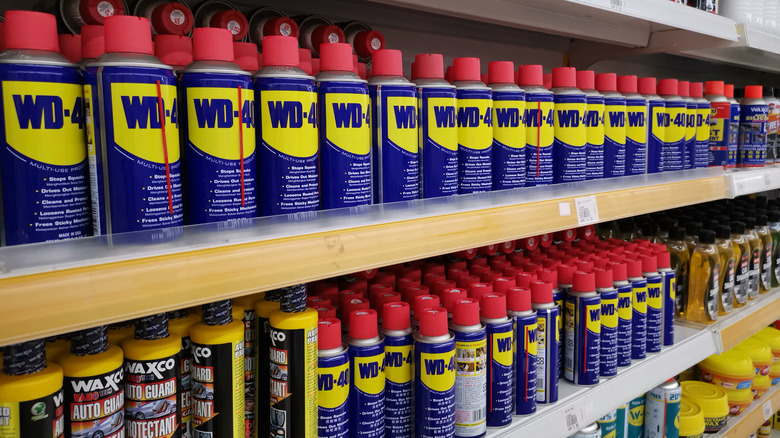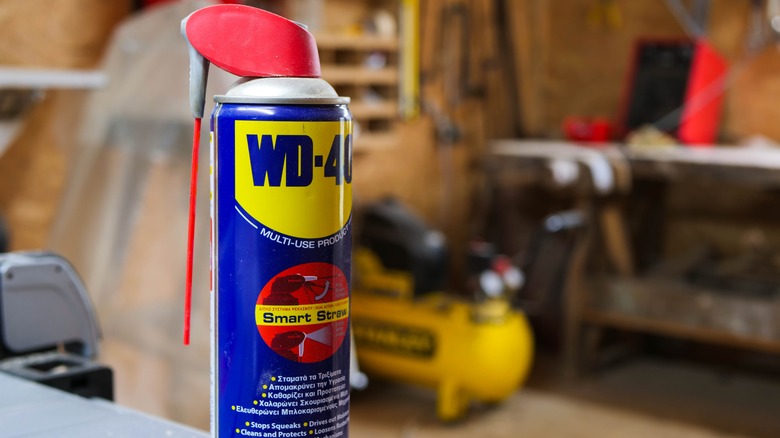Does WD-40 Ever Expire?
WD-40 is a product found inside many households, known for its seemingly limitless array of uses and its widely recognizable blue and yellow packaging. The solution is also lauded for its longevity, allowing homeowners to save money by replacing the product less often compared to common household cleaners available on the market. In fact, the standard WD-40®Multi-Use Product technically doesn't expire: "The product should continue to perform as expected for an almost indefinite period of time," the official website reads. But if stored incorrectly, the product may evaporate within its container.
WD-40 is a popular product on a global scale because it resolves so many everyday household issues without leaving behind a particularly irritating odor. But how much use will you be able to garner from a single can? Storing and handling the product properly will not only guarantee the most use, but it'll also ensure that your household uses the product safely and avoids becoming ill. Here's more on the potential uses for WD-40 at home and tips for getting the most out of this product.
The shelf life of WD-40
Because it's produced using a formula intended to last for an indefinite amount of time, WD-40 doesn't come with a specific "use by" date. Manufacturers claim that the mechanical shelf life of the product is exactly 5 years following the product's inception, though a can of WD-40 may last even longer if its owner follows proper protocol when storing and using it. In order to achieve the longest shelf life possible from WD-40, make sure the canister's cap is properly secured after each use, creating an airtight seal. Malfunctions with the canister's valve may also impact the efficiency of the product inside. For example, a can sporting a leak or a defective nozzle may allow outside air to seep inside, potentially speeding up the product's expiration process.
To get the most use out of the product, owners should also store the can in an appropriate setting as established by the solution's manufacturers. The WD-40 company advises users to store the formula in a location set between 4 and 54 degrees Celsius. WD-40 is a highly flammable substance, so leaving a canister of the solution in a place that's hotter than the designated temperature range may spark a fire. It also helps to keep the can in a dry space with proper ventilation.
What is WD-40 used for?
WD-40 — short for "Water Displacement, 40th formula" — is a product that penetrates rust, dirt, and grease to aid cleaning and metalworking processes. While the formula is most commonly used to prevent various metal products from rusting, WD-40 can be used in more than 2,000 ways both inside and outside the home. For instance, WD-40 can also be used to eliminate ink stains in carpets, shine stainless steel, and remove sticky substances like duct tape residue and chewing gum from hard surfaces. You can also use it on your vehicles to protect chrome accessories, remove insects, and prevent door locks from freezing during the winter. The product's ability to be used safely across multiple surfaces — including various rubbers, plastics, and metals — also adds to its versatility.
Although the product is free of carcinogens, it still contains harmful chemicals that have the potential to make users extremely ill. So, customers should still take precaution when using it. WD-40 isn't manufactured to be ingested or used on human skin — you will likely experience redness and irritation if the product gets on your bare skin, so wear chemical-resistant gloves when using it. Consuming the formula is even more dangerous, as it may cause nervous system complications, nausea, gastrointestinal issues, and even death. If you're using WD-40 in a poorly ventilated area, be sure to wear a respirator.


